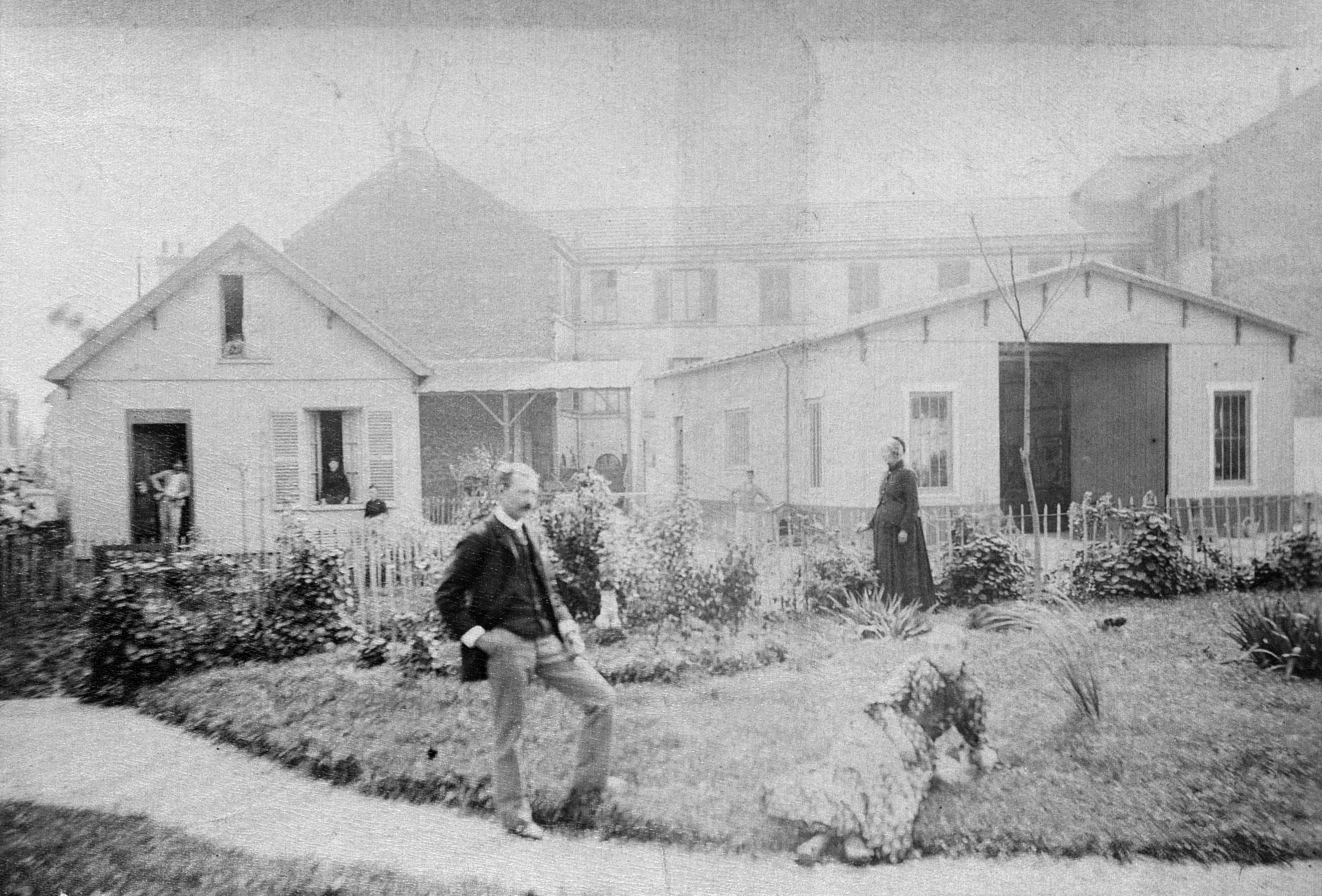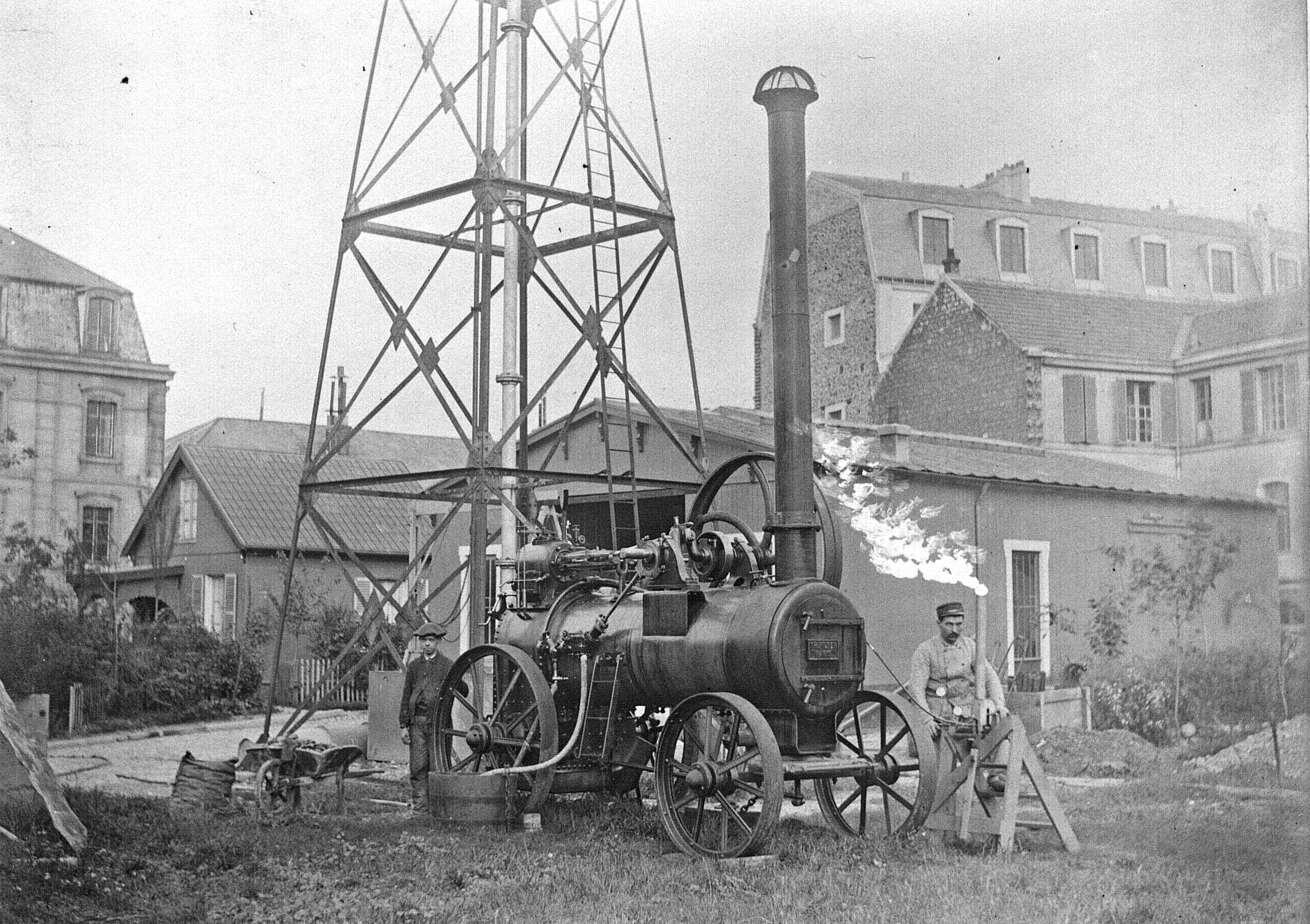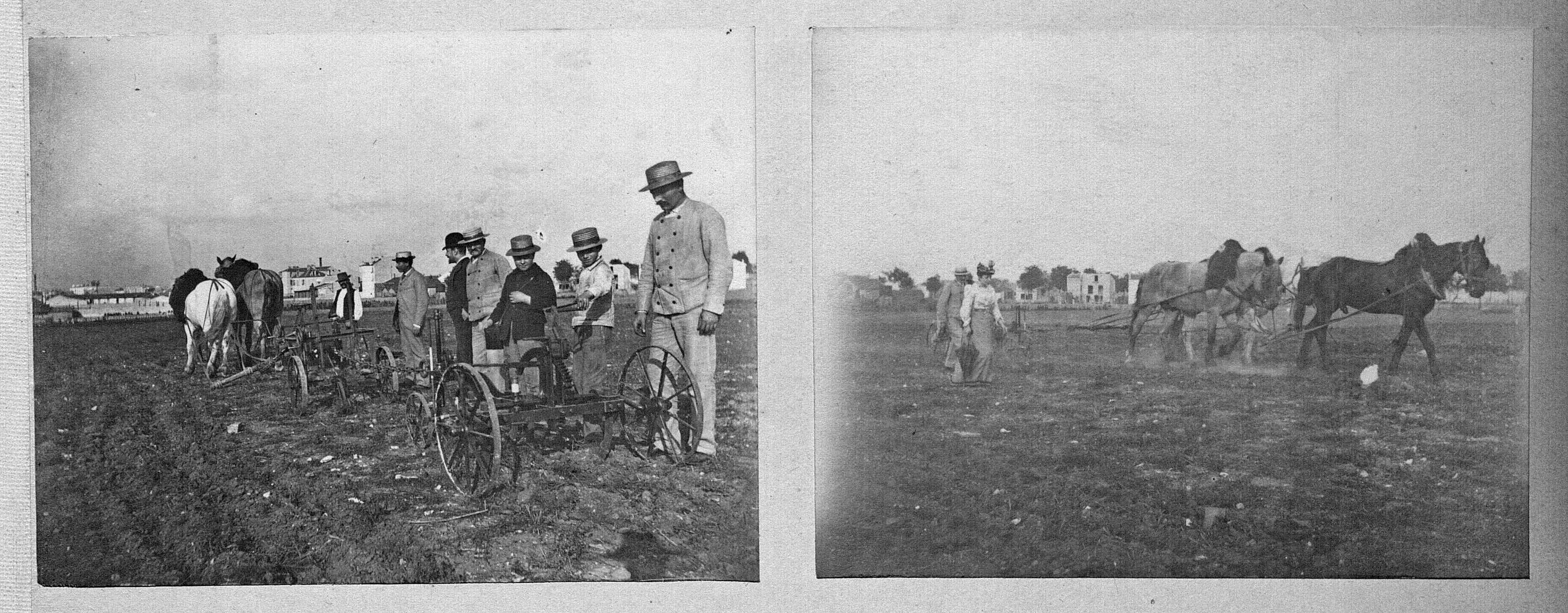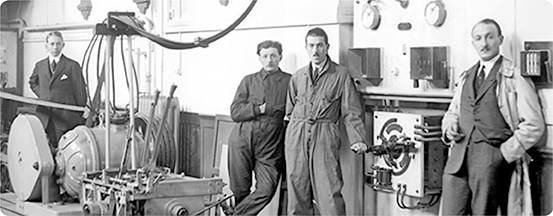The agricultural machinery test station, a photographic report
Bringing together two archives to revive one of our ancestors or: how can we revive the agricultural machinery testing station at the turn of the 20th century from old photos and an article from 1900?

It was in the archives of the agricultural machinery testing station (SEMA), which had survived a hundred years of removals, vertical storage and ravaging rodents, that we found two photo albums dating from the early days of the station. These documents illustrate SEMA's technical and testing activities between 1890 and 1899 and between 1920 and 1922.
Original glass plates had also survived and were digitised to complete them.
Thanks to this photographic find, it is now possible to illustrate an article written by Maximilien Ringelmann in 1901 entitled "The machine testing station” (La station d'essai de machines).
This article appeared in the work edited by Julien-Napoléon Haton de La Goupillière, " Mechanics at the 1900 exhibition” (La mécanique à l'exposition de 1900, Tome III. XIV. Le matériel agricole, pp. 211-228).
We have chosen to excerpt only the physical description of SEMA on Rue Jenner in the 13th arrondissement of Paris.
Maximilien Ringelmann :
"The Paris city council allocates a 3,309 square metre plot of municipal land, located at 47 rue Jenner - 13th arrondissement - for 15 years. The land borders a wide, easily accessible road. A 70-metre fence limits the station, and an iron gate opens onto a paved access ramp that leads to the main testing hall. A 4-tonne mobile crane facilitates manoeuvring.”

Exterior views of SEMA, taken from Jenner Street.

Plan of the SEMA made for the Chicago World's Fair 1893.
"The main testing hall, 15 metres long and 10 metres wide, contains, among others, the office, the 6 to 7 horsepower gas engine driving a 12-metre long main shaft, the precision equipment cabinets, the precision tool shop (including a forge, workbench, engine lathe and drilling machines), the darkroom and the machines for testing the strength of materials and so on. At the end of the hall, a floor limited by a balcony, serves as a drawing room, an archive and small equipment storage room."

Test hall.

Fitting shop and forge of the test hall.

Test hall viewed from the balcony.

Sectional drawing of the test hall made for the Chicago World's Fair 1893.

Sectional drawing of the testing hall made for the Chicago World's Fair 1893.
"This main hall is intended for testing various machines driven by arms or belts (like winnowers, sorters, flatteners, crushers, flour mills, chaff-cutters, feed choppers, dairy industry equipment and various engines) as well as industrial machines that are submitted to the station for examination. Special pulleys, with diameters that can be modified at will, make it possible to give the desired speed to the machine being tested with great precision.”

View of the testing hall and the director's house.

View of the test hall and the director's house with Mr Ringelmann in the foreground.
"Perpendicularly, and connecting with this main hall, there is a second one, 15.5 metres long and 10 metres wide; this annex is used as a shed for large equipment and for certain experiments (engine and pump tests).”

Test hall and annexe, 1899.

Testing the Martinez Ancira pump 1890.
"A lean-to 12 metres long and 4 metres wide, closed on its two gables, is used to house machines whose operation generates dust; these machines are operated by the main shaft of the main hall, which, for this purpose, protrudes from the building over a length of 3 metres; this protrusion also makes it possible to operate the main shaft by a motor (on hire) when the machine to be tested requires more than 6 horsepower."
"The testing of threshing machines and steam engines can be carried out in the open air, next to the access ramp, or under cover, under the aforementioned lean-to."

Steam engine tests 1894.
"A circular macadamised track is provided for the testing rotary mode systems and machines using animal power (for example, threshing machines, apple mills and machines for preparing mortar)."
"Behind the mast, a small 12 metre long and 6 metre wide storage room houses various machines."

Assembly of the pylon 1892.

Pylon and storage room, 1899.
"The various materials, such as wood, iron, coal, and materials intended for the tests, are stored in a yard located behind the main hall and the annex."
"The back of the grounds is laid out as a permanent pasture, 40 metres long and 20 metres wide on average; this site is intended for tests and special competitions organised by the Ministry or by societies under the auspices of the Agricultural Administration."

Test of a universal tyer, 1892.
"Such are, together with the director's house and the house of the mechanic-caretaker, the main buildings of the machine testing station."

The director’s house, 1890.

The mechanic’s house, 1891.
"The machines intended for cultivation, sowing, maintenance and harvesting work only pass through the Station to be sent, along with the necessary scientific equipment, to the various farms where experiments are carried out under normal operating conditions."

Testing of Bernet-Charoy scarifiers (Montrouge plain), 1892.

Testing a plough (Grignon), 1892.
References
Ringelmann, M. (1901). Mechanics at the 1900 exhibition (La mécanique à l’exposition de 1900), 1901, p. 211-224.
Illustrations from SEMA's photographic albums (to be fully available on Gallica by the end of 2023).
Text written by Pascale Hénaut (INRAE-DipSO).
Thanks to Camille Cédra, retired engineer from Cemagref, for his proofreading.
How to cite: Agate Focus: The agricultural machinery testing station, a photographic report, Pascale Hénaut (INRAE-DipSO), march 2023, https://agate.inrae.fr/agate/en/content/highlights


